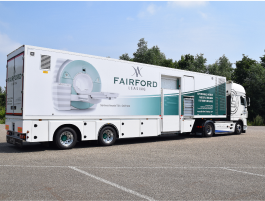As the MedTech sector continues to enjoy exponential growth across Europe and the US, the list of cutting edge healthcare solutions is rapidly expanding by the day. In fact, according to the most recent report from the European Patent Office (EPO), medical technology was the most popular patent filing category of 2018, with 13,795 filings in the MedTech category throughout the year, a 5 per cent increase from the 13,134 filings recorded in this category in 2017. However, in order to keep pace with leaps in technology and respond to publicised safety issues, regulation in the MedTech space is becoming ever more rigorous. For ambitious start-ups in this fast-growing sector, this means getting a medical device to market is getting not only more difficult, but more expensive. If their products are to see the light of day and potentially change the lives of many, regulatory approval is non-negotiable – unfortunately, it’s a little less straightforward than a tick in the box.
IDENTIFY PRODUCT-SPECIFIC STANDARDS EARLY
It’s easy to leave compliance for last when the sole focus is bringing a ground-breaking idea to life – particularly when there’s a good chance your innovative product could be transformational in the provision of care and treatment. Unfortunately, this approach is what often sees the costly redesign of medical devices as start-ups are suddenly forced to reconsider in light of regulatory requirements. If both patient and manufacturer are to truly benefit from the development of a new medical device, MedTech companies must ensure product-specific standards are a consideration at design stage; they must develop their product with safety and performance requirements of their target market in mind. The early identification of the specifications relevant to the medical technology in question can prevent companies from getting a nasty surprise when a prototype fails to meet requirements.
ALLOW SUFFICIENT TIME TO SECURE FUNDS
Developing a medical device and bringing it to market is a costly process and too often, eager start-ups focus on the immediate capital requirements and fail to consider the costs they may need in the future. Under-estimating the time needed for commercialisation of a product, they find themselves without the necessary funds to cover all the costs associated with regulatory approval. Sourcing and securing available funding from investors – not only for the initial stages of product innovation, but for the entire process of bringing it to market – is critical in preventing costs from becoming a hurdle that stands in the way of improved patient outcomes.
GET A HANDLE ON THE REGULATIONS OF YOUR TARGET MARKET
Navigating a complex regulatory landscape characterised by constant change won’t be easy, and the lack of harmony between global governments will undoubtedly complicate matters further due to the different requirements and expectations of various geographic markets. For companies in the UK-based MedTech sector, the forthcoming Medical Device Regulation (MDR) 2017 could pose a challenge due to the influx of applications for certification and the current availability of notified bodies to support such applications. Meanwhile, regulatory developments born from Brexit will make it even more challenging for MedTech companies in the UK and Europe; keeping abreast of any key changes in the compliance maze will be critical for those wishing to sell into the UK market – particularly if the new UKCA mark is introduced. Consideration for the regulatory nuances of your target market at the earliest possible stage of product design will ensure your MedTech device meets requirements and avoids unnecessary costs incurred through poor planning.











